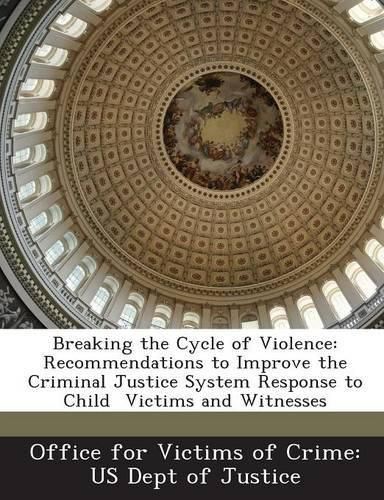Readings Newsletter
Become a Readings Member to make your shopping experience even easier.
Sign in or sign up for free!
You’re not far away from qualifying for FREE standard shipping within Australia
You’ve qualified for FREE standard shipping within Australia
The cart is loading…






Children represent one-fourth of crime victims. They experience abuse from parents and caretakers, are victimized by strangers, and are exposed to violence when they witness crimes in their homes and neighborhoods. Effective, age-appropriate interactions and practices adapted to the child can reduce the trauma that child victims and child witnesses experience and minimize their long-term physical, emotional, and social problems. Recommended actions include training all criminal justice professionals who come in contact with children to identify children who are exposed to violence as victims or witnesses and informing criminal justice professionals of the impact of victimization on children. In addition, criminal justice professionals assigned to handle cases involving child victims and child witnesses should have more training in forensic interviewing, child development, the identification of abuse-related injuries, the emotional and psychological impacts of abuse, and legal issues related to child victims and witnesses. Moreover, child witnesses should receive the same level of victim assistance and special protections within the criminal and juvenile justice systems as do child victims. Other actions should include collaborative efforts among multiple agencies and adaptations of practices to recognize and address children’s developmental stages and needs.
$9.00 standard shipping within Australia
FREE standard shipping within Australia for orders over $100.00
Express & International shipping calculated at checkout
Children represent one-fourth of crime victims. They experience abuse from parents and caretakers, are victimized by strangers, and are exposed to violence when they witness crimes in their homes and neighborhoods. Effective, age-appropriate interactions and practices adapted to the child can reduce the trauma that child victims and child witnesses experience and minimize their long-term physical, emotional, and social problems. Recommended actions include training all criminal justice professionals who come in contact with children to identify children who are exposed to violence as victims or witnesses and informing criminal justice professionals of the impact of victimization on children. In addition, criminal justice professionals assigned to handle cases involving child victims and child witnesses should have more training in forensic interviewing, child development, the identification of abuse-related injuries, the emotional and psychological impacts of abuse, and legal issues related to child victims and witnesses. Moreover, child witnesses should receive the same level of victim assistance and special protections within the criminal and juvenile justice systems as do child victims. Other actions should include collaborative efforts among multiple agencies and adaptations of practices to recognize and address children’s developmental stages and needs.